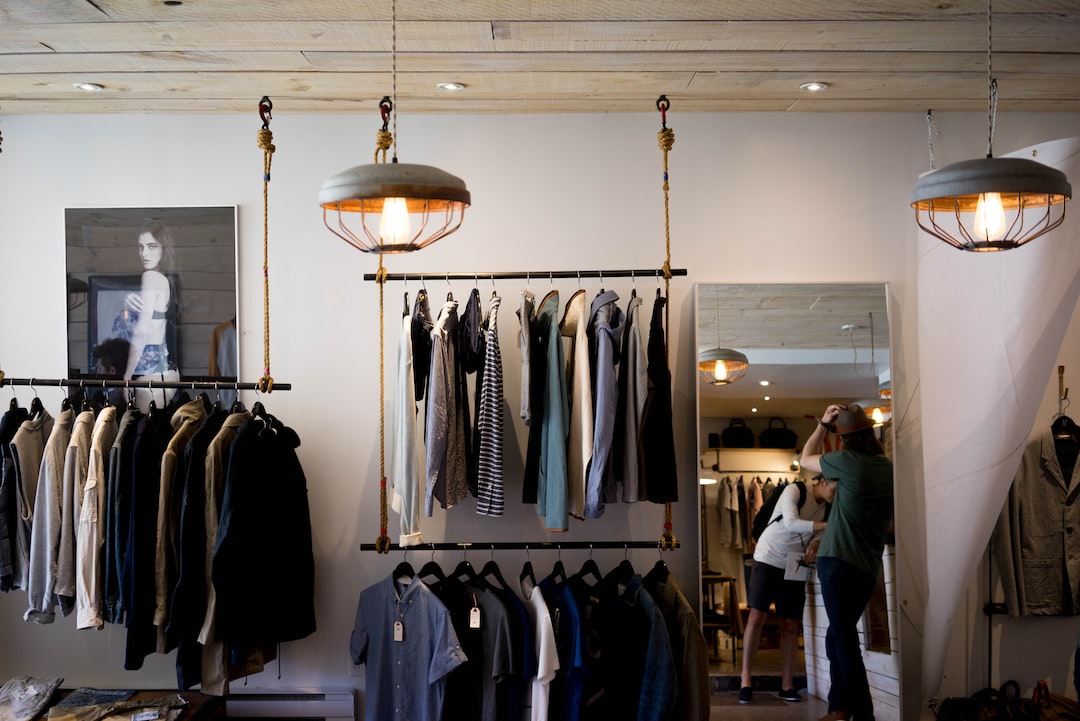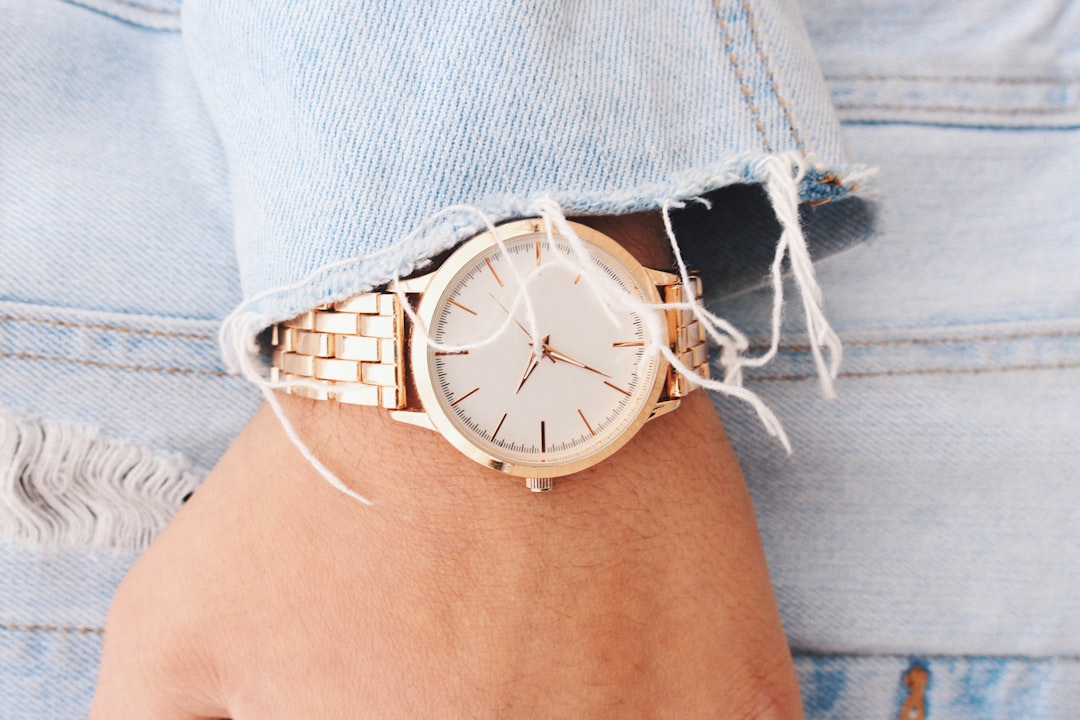As technology continues to advance, it’s no surprise that artificial intelligence (AI) is making its way into many industries, including fashion. From virtual stylists to supply chain optimization, the possibilities for AI in fashion are endless. As we move towards a more digital world, it’s important to understand the impact that AI can have on the fashion industry and how it can revolutionize the way we shop, design, and market fashion.
AI is already changing the way we shop for clothes. With smart personalization, AI algorithms can analyze a customer’s shopping behavior and preferences to offer personalized recommendations. This not only improves the shopping experience for the customer, but it also increases sales for retailers.
But AI’s impact on fashion doesn’t stop at shopping. It’s also changing the way we design clothes. With AI, designers can create new designs and patterns in a fraction of the time it would take to do so manually. This not only speeds up the design process, but it also allows for more creativity and experimentation.
AI is also having an impact on sustainability in the fashion industry. With supply chain optimization, AI algorithms can analyze data to find more efficient and sustainable ways to produce and distribute clothes. This not only reduces waste and improves sustainability, but it also saves costs for retailers.
In addition, AI is enhancing customer service in fashion. Chatbots and virtual stylists can offer personalized recommendations and styling advice to customers, improving the shopping experience and increasing customer satisfaction.
Finally, AI is changing the way fashion is marketed. With predictive analytics and targeted advertising, retailers can analyze customer data to offer personalized and relevant ads. This not only increases the effectiveness of marketing campaigns, but it also improves the overall shopping experience for customers.
As we look towards the future, it’s clear that AI will continue to play a major role in the fashion industry. From shopping to design to marketing, the possibilities for AI in fashion are endless. As we embrace this technology, we can create a more efficient, sustainable, and personalized fashion industry.
Smart Personalization: How AI is Revolutionizing the Shopping Experience
As technology continues to evolve, so too does the way we shop. Gone are the days of aimlessly wandering through department stores, hoping to stumble upon something that catches our eye. With the rise of AI in fashion, the shopping experience has become more personalized than ever before.
One of the key ways in which AI is revolutionizing the shopping experience is through smart personalization. By analyzing vast amounts of data, AI algorithms are able to create personalized recommendations for each individual shopper. This means that every time you visit an online store, you are presented with a curated selection of products that are tailored to your unique preferences.
But smart personalization goes beyond simply recommending products based on your past purchases or browsing history. AI algorithms are also able to take into account a wide range of other factors, such as your location, the weather, and even your social media activity. This means that the recommendations you receive are not only personalized to your individual tastes, but also to your current situation and context.
The benefits of smart personalization are clear. By presenting shoppers with a tailored selection of products, retailers are able to increase the chances of a purchase being made. This not only benefits the retailer, but also the shopper, who is more likely to find something they truly love and will continue to use.
But the benefits don’t stop there. By analyzing data on what products are popular with certain demographics, retailers are also able to better understand their customers and create products that are more likely to sell. This can lead to a more efficient supply chain, with less waste and a reduced environmental impact.
Of course, there are also concerns around the use of AI in fashion. Some worry that the rise of smart personalization could lead to a homogenization of fashion, with everyone wearing the same trendy items. Others worry about the potential for AI algorithms to perpetuate biases and stereotypes.
However, with proper oversight and regulation, these concerns can be addressed. And ultimately, the benefits of smart personalization in fashion are hard to ignore. By creating a more personalized shopping experience, retailers are able to better serve their customers and create a more sustainable and efficient fashion industry.
But smart personalization goes beyond simply recommending products based on your past purchases or browsing history.
Designing with AI: The Future of Fashion Creation
As AI continues to revolutionize the fashion industry, it is not just limited to enhancing customer experiences and optimizing supply chains. The future of fashion creation lies in designing with AI, which has the potential to transform the industry in unprecedented ways.
AI algorithms can analyze vast amounts of data, from customer preferences to global trends, to generate insights that can inform the design process. This can allow designers to create collections that are not just aesthetically pleasing, but also cater to the demands and desires of their target audience.
Moreover, AI can also help streamline the design process, reducing the time and resources required to create a collection. By automating certain aspects of the design process, designers can focus on more creative and innovative aspects of their work, resulting in more unique and original designs.
One of the most exciting applications of AI in fashion design is the use of generative adversarial networks (GANs), which can create new designs based on existing ones. This technology allows designers to explore new design possibilities, without having to start from scratch every time.
Another area where AI is transforming fashion design is in the use of 3D printing technology. By using AI algorithms to generate 3D models, designers can create prototypes more quickly and efficiently than ever before. This can help reduce waste and minimize the environmental impact of the fashion industry.
However, there are also concerns about the impact of AI on the creative process. Some argue that relying too heavily on AI could stifle creativity and result in a homogenization of fashion. It is important for designers to strike a balance between using AI as a tool to enhance their creativity, while still maintaining their unique perspective and vision.
Overall, designing with AI is the future of fashion creation, and has the potential to transform the industry in ways we can’t even imagine yet. As AI continues to evolve, we can expect to see more innovative and creative applications of this technology in the fashion world.
By automating certain aspects of the design process, designers can focus on more creative and innovative aspects of their work, resulting in more unique and original designs.
Supply Chain Optimization: AI’s Impact on Sustainability and Efficiency
As the fashion industry continues to grow and evolve, it is becoming increasingly important for companies to focus on sustainability and efficiency in their supply chains. This is where AI comes in, offering unique solutions to some of the biggest challenges facing the industry today.
One of the key benefits of AI in supply chain optimization is its ability to analyze and predict demand. By using machine learning algorithms to analyze data from various sources, including social media, sales figures, and historical trends, companies can gain valuable insights into what products are likely to be popular in the future.
This, in turn, allows companies to optimize their production processes and reduce waste by producing only what is needed. By doing so, they can minimize the environmental impact of their operations while also improving their bottom line.
Another way that AI is impacting supply chain sustainability is through its ability to monitor and manage inventory levels. By using sensors and other technologies to track inventory in real-time, companies can better manage their stock levels and reduce the risk of overproduction or stockouts.
This not only helps to minimize waste, but it also ensures that customers are able to find the products they need when they need them, improving the overall shopping experience and customer satisfaction.
Finally, AI is also being used to optimize logistics and transportation in the fashion industry. By using algorithms to optimize routes, reduce delivery times, and minimize fuel consumption, companies can reduce their carbon footprint and improve the efficiency of their operations.
AI is playing an increasingly important role in the fashion industry, particularly when it comes to supply chain optimization. By leveraging the power of machine learning and other technologies, companies can improve sustainability, reduce waste, and enhance efficiency, all while delivering a better shopping experience for their customers.
Another way that AI is impacting supply chain sustainability is through its ability to monitor and manage inventory levels.
Enhanced Customer Service: Chatbots and Virtual Stylists in Fashion
The fashion industry has always been customer-centric and focused on providing personalized experiences to consumers. With the rise of AI, fashion brands are now able to take customer service to the next level. AI-powered chatbots and virtual stylists are transforming the way customers interact with fashion brands, providing them with personalized recommendations, styling advice, and real-time assistance.
Chatbots are becoming increasingly popular in the fashion industry, as they can handle a high volume of customer queries and provide prompt responses, 24/7. They can assist customers with everything from product inquiries to order tracking, and even suggest outfit combinations based on their preferences and purchase history. By harnessing the power of natural language processing and machine learning, chatbots can understand and respond to customer queries in a conversational and intuitive manner, making the shopping experience more seamless and efficient.
Virtual stylists are another example of how AI is enhancing customer service in the fashion industry. By analyzing a customer’s style preferences, body type, and purchase history, virtual stylists can provide personalized styling advice and outfit recommendations. They can even create virtual wardrobes for customers, making it easier for them to mix and match pieces and create new outfits. Virtual stylists are particularly useful for online shopping, where customers may not have the opportunity to try on clothes or receive in-person styling advice.
The use of chatbots and virtual stylists not only improves the customer experience but also provides valuable data and insights for fashion brands. By analyzing customer interactions and preferences, brands can improve their product offerings, marketing strategies, and overall customer engagement. AI-powered customer service tools are also cost-effective, as they require minimal human intervention and can handle a large volume of queries simultaneously.
AI-powered chatbots and virtual stylists are transforming the way customers interact with fashion brands, providing them with personalized recommendations, styling advice, and real-time assistance. These tools not only improve the customer experience but also provide valuable data and insights for fashion brands. As the technology continues to evolve, it is exciting to see how AI will continue to enhance customer service in the fashion industry.
Virtual stylists are particularly useful for online shopping, where customers may not have the opportunity to try on clothes or receive in-person styling advice.
AI in Marketing: Predictive Analytics and Targeted Advertising
As we have seen in the previous sections, AI has revolutionized the fashion industry in several ways. From personalization to design and sustainability, AI has made significant contributions to the industry. However, AI’s impact on marketing is perhaps one of the most significant changes we have seen in recent years.
With the rise of e-commerce, fashion brands are looking for new ways to reach their target audience and increase sales. This is where AI comes in. By using predictive analytics and targeted advertising, brands can now personalize their marketing strategies to each customer’s unique preferences, behavior, and interests.
Predictive analytics uses machine learning algorithms to analyze customer data, such as purchase history, browsing behavior, and demographics. This data is then used to predict what the customer is likely to buy in the future. By understanding the customer’s preferences, brands can create targeted marketing campaigns that are more likely to convert into sales.
Targeted advertising takes this a step further by showing personalized ads to customers based on their behavior and interests. For example, if a customer has been browsing for a specific type of clothing, they may see ads for similar products on their social media feeds or websites they visit. This not only increases the likelihood of the customer making a purchase, but it also makes the shopping experience more efficient and enjoyable.
In addition to personalized marketing, AI can also optimize advertising campaigns for maximum effectiveness. By analyzing data in real-time, AI can adjust ad placement, targeting, and messaging to reach the right audience at the right time. This can save brands time and money while increasing ROI.
However, there are also concerns about the use of AI in marketing, particularly when it comes to privacy and data protection. Brands must be transparent about how they collect and use customer data, and ensure that they are complying with privacy laws and regulations.
Overall, AI’s impact on marketing in the fashion industry is undeniable. By using predictive analytics and targeted advertising, brands can create personalized and efficient marketing strategies that increase sales and improve customer satisfaction. As AI continues to evolve and improve, we can expect to see even more significant changes in the way fashion brands market their products.
This not only increases the likelihood of the customer making a purchase, but it also makes the shopping experience more efficient and enjoyable.
Conclusion: The Future of Fashion with AI
As we’ve explored in the previous sections, AI is rapidly transforming the fashion industry in a variety of ways. From personalized shopping experiences to sustainable supply chain management, AI is making a significant impact on the industry’s efficiency and customer satisfaction.
One of the most exciting aspects of AI in fashion is its potential to revolutionize the design process. With the ability to analyze data and generate new designs based on customer preferences, AI has the potential to create truly unique and personalized clothing. This technology could also help reduce waste by producing only the clothes that are in demand, rather than mass-producing items that may not sell.
Another area where AI is making a significant impact is in marketing. Predictive analytics and targeted advertising are allowing brands to reach their ideal customers with personalized messaging and offers. This not only improves the customer experience but also increases revenue and brand loyalty.
However, as with any new technology, there are concerns about the potential negative impacts of AI in fashion. Some worry that it could lead to job loss in the industry, particularly in areas like design and customer service. It’s important for companies to consider these potential consequences and work to mitigate them as much as possible.
Overall, the future of fashion with AI looks bright. As the technology continues to evolve and improve, we can expect even more innovative applications in the industry. From sustainable production methods to unique, personalized designs, AI has the potential to transform the way we think about and consume fashion.





